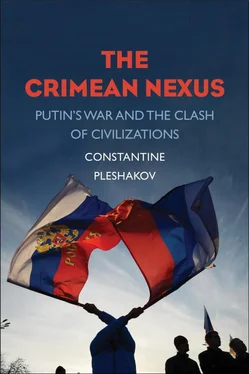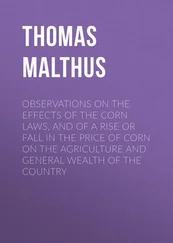But contrary to the patriotic Russian myth, the Black Sea has never been a Russian lake, and despite the fears of Russia’s neighbors, it will likely never be one. For two centuries, Russia has been the dominant naval power in the basin, but it is Turkey, not Russia, that determines the net balance. The Bosporus, the Sea of Marmara, and the Dardanelles, collectively known in European diplomacy as the Straits, belong to Turkey, and it is up to Turkey alone to determine who will have access to the Black Sea and on what conditions. All other Black Sea countries are in the situation of a homeowner whose driveway is separated from the turnpike by somebody else’s property.
Globally, the Straits are not as important as the Suez and Panama canals, or Gibraltar. Those three serve every seafaring nation; the Straits serve only the Black Sea countries. Yet they are a lifeline for Bulgaria, Georgia, Romania, and Ukraine, their only oceanic connection. To that, add the landlocked nations of the Caucasus—Armenia and Azerbaijan—and also the five “stans” of post-Soviet Central Asia. Russia’s Eurasian coastline is immense, but the Black Sea coast is the only one that is ice-free year round. Close the Straits, and Russian commerce will suffocate. Open the Straits to powers at war with Russia, and the Russian navy will bleed.
In the Crimean War, Turkey turned the Straits into a highway for the British and French navies. In World War I, it let its ally, Germany, send cruisers into the Black Sea, largely incapacitating the Russian fleet there. In World War II, Ankara refused to let Germans and Italians in, thus saving the Soviets from losing the south. [22] Doenitz, Memoirs , 389.
The international treaty regulating the Straits—the Montreux Convention of 1936—allows Turkey to close them to all foreign warships in times of war or when threatened by aggression. It may refuse access to the merchant ships of nations with which it is at war. In peacetime, all civilian vessels are guaranteed free passage “by day and by night, under any flag with any kind of cargo.” The transit of naval vessels is regulated, and the passage of naval ships not belonging to the Black Sea nations is heavily restricted. Outsiders’ warships must be under 15,000 tons, the guns they carry under 203 millimeters. No one, including the Black Sea nations, may send an aircraft carrier through the Straits.
These provisions have been charged with conflict from the day the convention was signed. After 1945, wanting uninhibited access to the Mediterranean, Stalin demanded that Ankara cede him “joint ownership” of the Straits. That strategic pressure led U.S. president Harry Truman in 1947 to proclaim the Truman Doctrine, in which he pledged support of every nation threatened by the USSR, a move many historians consider to have launched the Cold War. Though universal in its wording, the Truman Doctrine was specifically crafted to protect Turkey and its Mediterranean neighbor Greece.
Grudgingly, the Soviets caved in. To evade the ban on aircraft carriers, they designated the only two they had—the Kiev and the Admiral Kuznetsov —as “aircraft carrying cruisers.” They usually passed through the Bosporus at night; Orhan Pamuk writes in his Istanbul memoir: “A great hulk, growing larger and larger as it rose from the pitch-dark sea and approached the closest hill—the hill from which I was watching—this was a colossus, a leviathan, in shape and size a specter from my worst nightmares, a Soviet warship!—rising out of the night and the mist as if in a fairy tale, a vast floating fortress.” [23] Orhan Pamuk, Istanbul: Memories and the City (New York: Vintage, 2006), 203.
NATO had to use semantic evasions as well. In the 1960s, when the United States started sending ships armed with 305-millimeter missiles into the Black Sea, the Soviet Union complained that this violated the 203-millimeter limit. NATO responded by saying that the Montreux Convention did not mention missiles, only guns. The superpowers’ semantic dodging was a Cold War equivalent of the joke about the priest who, when reproached for eating a chicken on a Friday, christened it a fish.
With the annexation of Crimea, Russian share of control over the region spiked. The Ukrainian navy—or what was left of it—evacuated to Odessa. Another, indirect victim of the annexation was the Republic of Georgia. In 2008, Russia and Georgia fought a short war with lasting consequences. Georgia has strong NATO aspirations and had sided with Ukraine against Russia in the past. The Russian annexation moved Ukraine so far west that military cooperation between Tbilisi and Kiev is now all but impossible. For Russia, the acquisition of Crimea makes every hostile act against Georgia—intelligence collecting, sea traffic blockade, or military strikes—infinitely easier. If Russia ever lays siege to Ukrainian and Georgian ports, that may be the end of sovereignty for both. Russian strategists undoubtedly want as much control over the Black Sea as the United States holds over the Caribbean.
The worst-case strategic scenario for Russia on the Black Sea would be the closure of the Straits to Russian vessels, paired with foreign naval intervention—in other words, the repetition of the Crimean War and World War I. For that to happen, Turkey must be at war with Russia, a scenario hard to imagine only a year ago, but not totally unthinkable now, since the two powers clashed over Syria.
Also, Russia’s adversaries do not even need Turkey’s cooperation to block the Straits at their southern end, at the Dardanelles in the Mediterranean. Position a naval force in international waters there, and the hostile fleet will stop all the Russian traffic. This may turn out to be the way to impose the severest sanctions on the Russian economy.
If there is one achievement that Vladimir Putin can be truly proud of, it would be a series of carefully engineered victories in energy wars. Crimea is a monumental foothold in that battle.
According to the Convention on the Law of the Sea, coastal states “have sovereign rights” in a 200-nautical-mile “exclusive economic zone” where they own the natural resources on the sea floor. The annexation of Crimea has added 36,000 square miles to Russia’s exclusive economic maritime zone in the basin, more than tripling its size. [24] “United Nations Convention on the Law of the Sea of 10 December 1982,” United Nations, updated August 22, 2013, www.un.org/depts/los/convention_agreements/convention_overview_convention.htm (retrieved February 8, 2015); William J. Broad, “In Taking Crimea, Putin Gains a Sea of Fuel Reserves,” New York Times , May 17, 2014.
There are gas fields in the Black Sea and the Sea of Azov. Until recently, these reserves did not seem terribly important: the Ukrainian company that owned and developed the fields, Chernomorneftegaz, accounted for just 5 percent of Ukraine’s energy production. In the past few years, however, there have been reports suggesting large fossil fuel fields in the basin.
As in Marco Polo’s time, today the Black Sea is again the terminus of a transcontinental route—this time not for silk but for gas. With the annexation, a new Russia-to-Europe gas pipeline bypassing Ukraine could be built mostly in Russian waters. There is an option of laying part of it through Crimea, or very close to its coast, cutting the costs of construction and operation.
When the European Union, to punish Russia, put the South Stream project on hold, Putin just scrapped the whole thing, flew to Turkey, and negotiated an alternative: an undersea pipeline taking Russian gas to the Turkish border with Greece. With a planned annual capacity of 63 billion cubic meters, the project was christened Turkish Stream. [25] Darya Korsunskaya, “Putin Drops South Stream Gas Pipeline to EU, Courts Turkey,” Reuters, December 1, 2014, www.reuters.com/article/2014/12/01/us-russia-gas-gazprom-pipeline-idUSKCN0JF30A20141201 (retrieved December 1, 2014).
Читать дальше












